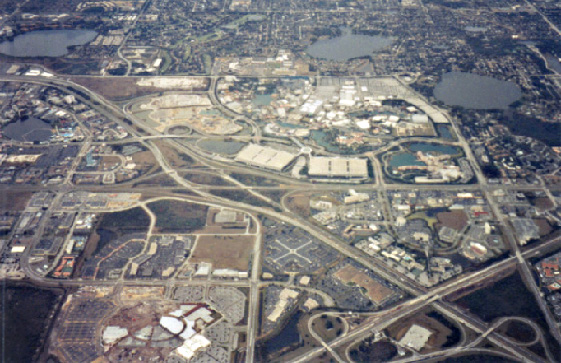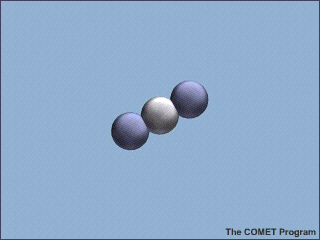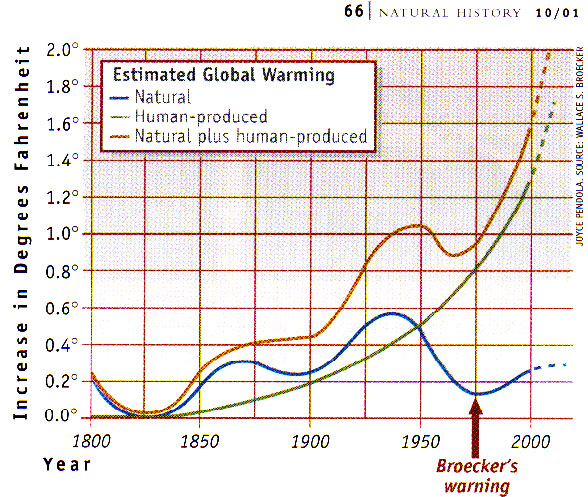FAQ: Frequently Asked Questions
What
is global warming? | What
is a greenhouse gas? | How is
climate change caused ? | What
can people do about it?
What
is global warming?
Global Warming is an unstable condition
of the atmosphere,
when excessive heat from solar radiation is captured by the  increasing
amount of heat trapping, or so called greenhouse, gases in the air. These vaporous compounds as products of fossil fuel
combustion are building-up in the planet's air and water. This combustion from burning of wood, chemicals or industrial fuels is due largely to motor
vehicles and electrical technology which many well-off people can use more effectively.
Some of these emissions also come from burning forests and grasslands and
from wetland drainage and deforestation.
increasing
amount of heat trapping, or so called greenhouse, gases in the air. These vaporous compounds as products of fossil fuel
combustion are building-up in the planet's air and water. This combustion from burning of wood, chemicals or industrial fuels is due largely to motor
vehicles and electrical technology which many well-off people can use more effectively.
Some of these emissions also come from burning forests and grasslands and
from wetland drainage and deforestation.
What
is a greenhouse --or heat trapping-- gas?
 Any vaporous emission containing
carbon or nitrogen that retains heat or acts as a thermal insulator to trap
radiation and emit it as long wave radiation or heat is a greenhouse gas. These natural and industrially generated compounds
have long residence periods. This means that they stay chemically active by
absorbing radiation -- or "trapping heat." The duration of their capacity to store heat is indicated
below by the number of years in parenthesis (00) after the name of the heat trapping or greenhouse
gas.
Any vaporous emission containing
carbon or nitrogen that retains heat or acts as a thermal insulator to trap
radiation and emit it as long wave radiation or heat is a greenhouse gas. These natural and industrially generated compounds
have long residence periods. This means that they stay chemically active by
absorbing radiation -- or "trapping heat." The duration of their capacity to store heat is indicated
below by the number of years in parenthesis (00) after the name of the heat trapping or greenhouse
gas.
As defined by the Kyoto Protocol
(1997) to the Climate Treaty of 1992 these greenhouse gas emissions are
composed of carbon dioxide (500 years), methane (7 - 10 years), nitrous oxide (150 years), chlorofluorocarbons (60-400 years), and hydrofluorocarbons (260) years.
How is climate chaos, or global warming --called innocuously, climate change--
caused by an unstable condition of the atmosphere?
The earth's natural
surface conditions over time swing between cold, "ice ages" and warm, "hothouse"
conditions. The content of the air -- in vapor form -- moderates the earth's
temperature extremes, fluctuating between not so hot and not too cold.
The oceans stabilize the atmosphere's temperature because they absorb and
store heat while clouds or white surfaces, like ice, reflect incoming solar
radiation. When excessive
exhaust vapor such as carbon dioxide gas is present in the oceans or
the air the temperature rises because as a green house gas, carbon dioxide
traps heat.
Instability occurs
when the biological cycles of nitrogen and carbon generate a build-up of
those compounds in the air and water, like a bottleneck, a greater mass
is stuck in one place, rather than moving from water or air into plants or bacteria. Instability
emerges from this increasing mass of greenhouse gases in the air because they gases are not absorbed in living creatures or stored in rock formations (limestone).
There is more carbon dioxide in the air today than any time in the last
2 million years.
So is it not a good thing
that we are warming up the oceans and the air?
No, it is not because this change is happening too quickly. Hotter temperatures
cause changes in the daily weather patterns, they accelerate evaporation of water from
surfaces, soil, or vegetation and increase the rate of water loss from plants. Over
longer time periods severe weather patterns generated by extreme differences
among hot, mild, and cold areas alter prevailing climate. Warmer air temperatures
cause circumpolar tundra to change because the permafrost (frozen ground
water) beneath the tundra vegetation melts. In this thaw, the methane trapped
in the bogs, marshes and polar wetlands is released into the surrounding air. Methane
is a greenhouse gas with 30 times the capacity of carbon dioxide compounds
to trap or store heat. Polar areas are now and will continue to be the most seriously altered ecosystems
on earth by global warming.
How
is this condition created by technology?
In
1830 Jean Baptiste August Fourier, the great mathematician, hypothesized that
industrial burning of coal to fuel manufacturing could increase the exhaust
in the air and thus "industrially" heat the planet. That is because coal, pound
for pound, generates more heat than does wood, grass or dung. Coal when burned,
like any fuel, emits carbon and sulfur dioxides into the air because it is made
from concentrated carbon, hydrogen and sulfur compounds. 
In the 1890s Svante Arrhenius,
a Swedish chemist, confirmed the hypothesis showing that
carbon dioxide, an odorless and colorless vapor in the air, traps heat and
raises the temperature of anything containing the carbon dioxide gas.
Arrhenius
speculated that it would take 300 years for the buildup
of carbon dioxide in the air to cause the climate to change and that, all
in all, Sweden would become more like France. By that he believed that Sweden
would grow crops that thrive in warmer climates; thus oats and rye would be
replaced by wheat and grapes. The key to his idea is that there would be a gradual change to which vegetation and insects could adjust.
Over 100 years ago scientists
and mathematicians realized that heat generated from air pollution would
change the temperatures, weather and rainfall on the earth. These changes
in temperature and rainfall patterns are in proportion to the removal of
forest vegetation, the industrial pollution emitted into the air or the
drainage of water bodies in particular places.
The
speed at which these greenhouse gases have accumulated due to spreading
industrial capacity, transportation and fossil fueled electricity occurs
at a rate of increase nearly four times faster than Arrhenius' had imagined.
The isotopic ratio --in gaseous pollutants between heavier and lighter
elemental carbon or nitrogen-- reveals the source of the compounds containing
these isotopes. Heavier isotopes are generated by industrial combustion at a greater concentration, than are lighter isotopes.
What
can people do about it?
The way people use energy to fuel
our electricity, vehicles and manufacturing needs is very inefficient, in that
waste gas pollutes the  air. Nitrous
oxide from cars and electrical plants and carbon dioxide emissions are direct
results of industrial and mechanical processes and products. Any changes we
make to do more with less energy, drive fewer miles, or reuse materials will
appreciably reduce air pollution.
air. Nitrous
oxide from cars and electrical plants and carbon dioxide emissions are direct
results of industrial and mechanical processes and products. Any changes we
make to do more with less energy, drive fewer miles, or reuse materials will
appreciably reduce air pollution.
By cleaning up the air, less
exhaust material settles into the water or contaminates the soil, so there
is a reduction in damages to fishery, crop and forestry production.
Your comfort, health and savings
depend, to a great degree, on how efficiently you use fuels to get the most
out of your investment in appliances, vehicles or buildings. Because so many
people unknowingly use oil, gas and coal, if each of us reduces energy consumption
or improves the fuel efficiency of our vehicles, each small action may lead
to huge reductions in waste. That waste reduction can reduce the rate of carbon
dioxide, and other green house gas build-up in the air.
President
Carter's reference in his Nobel
Peace Prize acceptance speech.
What Is the News relating to global warming
"Immediate Risk to National Security Posed by Global Warming," ... it intends to protect bases, prepare for humanitarian disasters and plan for global conflicts.
So
! What ... may I do?
Is the rise in carbon dioxide and related greenhouse gases due to humans; our recent industrial behavior?

 increasing
amount of heat trapping, or so called greenhouse, gases in the air. These vaporous compounds as products of fossil fuel
combustion are building-up in the planet's air and water. This combustion from burning of wood, chemicals or industrial fuels is due largely to motor
vehicles and electrical technology which many well-off people can use more effectively.
Some of these emissions also come from burning forests and grasslands and
from wetland drainage and deforestation.
increasing
amount of heat trapping, or so called greenhouse, gases in the air. These vaporous compounds as products of fossil fuel
combustion are building-up in the planet's air and water. This combustion from burning of wood, chemicals or industrial fuels is due largely to motor
vehicles and electrical technology which many well-off people can use more effectively.
Some of these emissions also come from burning forests and grasslands and
from wetland drainage and deforestation. Any vaporous emission containing
carbon or nitrogen that retains heat or acts as a thermal insulator to trap
radiation and emit it as long wave radiation or heat is a greenhouse gas. These natural and industrially generated compounds
have long residence periods. This means that they stay chemically active by
absorbing radiation -- or "trapping heat." The duration of their capacity to store heat is indicated
below by the number of years in parenthesis (00) after the name of the heat trapping or greenhouse
gas.
Any vaporous emission containing
carbon or nitrogen that retains heat or acts as a thermal insulator to trap
radiation and emit it as long wave radiation or heat is a greenhouse gas. These natural and industrially generated compounds
have long residence periods. This means that they stay chemically active by
absorbing radiation -- or "trapping heat." The duration of their capacity to store heat is indicated
below by the number of years in parenthesis (00) after the name of the heat trapping or greenhouse
gas.

 air. Nitrous
oxide from cars and electrical plants and carbon dioxide emissions are direct
results of industrial and mechanical processes and products. Any changes we
make to do more with less energy, drive fewer miles, or reuse materials will
appreciably reduce air pollution.
air. Nitrous
oxide from cars and electrical plants and carbon dioxide emissions are direct
results of industrial and mechanical processes and products. Any changes we
make to do more with less energy, drive fewer miles, or reuse materials will
appreciably reduce air pollution.
